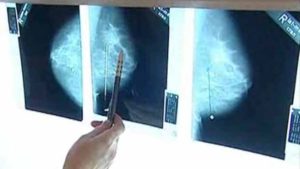 This article by academic physician and cancer researcher H. Gilbert Welch about viewing cancers as a barnyard pen of animals (birds, rabbits, and turtles) is a way to explain why some early screening tests haven't really reduced the rate of deaths from certain cancers, such as breast cancer (here and here). Or another way of looking at it is that some cancers are really "bad" and aggressive (birds that have already flown away to distant points at earliest cancer diagnosis), while others are "good" (rabbits or cancers that are slowly spreading and that can be treated, or turtles - that are such slow growing cancers that they would never cause a problem).
This article by academic physician and cancer researcher H. Gilbert Welch about viewing cancers as a barnyard pen of animals (birds, rabbits, and turtles) is a way to explain why some early screening tests haven't really reduced the rate of deaths from certain cancers, such as breast cancer (here and here). Or another way of looking at it is that some cancers are really "bad" and aggressive (birds that have already flown away to distant points at earliest cancer diagnosis), while others are "good" (rabbits or cancers that are slowly spreading and that can be treated, or turtles - that are such slow growing cancers that they would never cause a problem).
Interesting and thought-provoking reading. Excerpts from an editorial by H.Gilbert Welch from Breast Cancer Research and Treatment:
Cancer used to be so simple. It started as a wayward cell that then underwent a stepwise progression: from in situ to local, local to regional and, finally, regional to distant disease. At least, that is what I was taught in medical school…some (gulp) 40 years ago. Narod and Sopik suggest a wildly different paradigm. Local growth and distant metastasis are independent phenomena. Local control of cancer (e.g., efforts to minimize local recurrence) has no effect on its tendency to metastasize. If a cancer is destined to spread to distant sites, it will have already done so.
Call it the “bad cancers are bad” model. Or, alternatively, “good cancers are good.” Oddly enough, in 1955 a cancer surgeon at the Cleveland clinic—George Crile Jr.—foretold this complexity on the pages of Life magazine: In clinical practice to say that a person has cancer gives as little information about the possible course of his disease as to say that he has an infection. There are dangerous infections that may be fatal and there are harmless infections that are self-limited or may disappear. The same is true of cancers. Cancer is not a single entity. It is a broad spectrum of diseases related to each other only in name.
..... The conventional model has been that large tumors are more likely to metastasize because they have a large pool of cancer cells to disseminate. Narod and Sopik instead suggest that these tumors became large because they are more aggressive cancers and thus are more likely to metastasize. Large, late-stage, node positive lesions are simply valuable markers for “badness.” The corollary is that small, early-stage, node negative lesions are valuable markers for “goodness.” But not always.
Which brings us to the conundrum of DCIS. It would be simplest if all DCIS was pseudodisease— cancer not destined to ever cause problems for our patients. Most DCIS is pseudodisease, but as Narod documented in earlier work , about 3% of women with DCIS will die from breast cancer in the next 20 years. Over half of these women did not experience an in-breast invasive recurrence prior to death. In other words, bad breast cancers are bad—from the get go.
This phenomenon explains the limited ability of mammography to reduce breast cancer mortality. The lack of value in finding microscopic breast cancers (like DCIS) is one of the least well-recognized findings from the ten randomized trials of mammography. Only one trial addressed this important question, the second Canadian trial ..... Given the finding of no difference in breast cancer mortality between the two groups, the lesson is clear: there is no obvious value to finding breast cancers that are so small they cannot be felt (such as most DCIS).
Overdiagnosis is made possible by cancers at the other end of the spectrum. Overdiagnosis is the detection of cancers that are very good – so good that patients would be better of not having them detected. Overdiagnosis doesn’t limit the ability of mammography to reduce breast cancer mortality—instead it’s a side-effect of the effort.
Such heterogeneity in cancer poses huge challenges for our effort to catch the disease early. It’s been described as the “barnyard pen of cancers” (an analogy that likely originates with Crile). We are trying to catch birds, rabbits, and turtles.
We can’t catch the birds early, because they have already gone—these are the most aggressive cancers, those that have already spread by the time they are detectable. We are able to catch the rabbits—the more slowly progressive cancers— but their earlier detection may not help much, because they weren’t destined to metastasize anyway. And then there are the turtles. There’s no need catch them, because they’re not going anywhere anyway.
